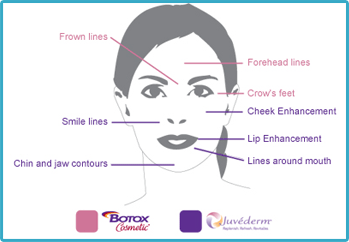- Home
- Injections
- Laser Treatments
- Specialties
Specialtiesview all
- Other Treatments
- Before After Photos
Before After Photosview all
- Contact Us
- Doctor And Staff
- About Celibre
- Blogs
Dermal fillers are the hottest thing in aesthetic medicine. While there are a few different choices of what’s in the filler material itself, hyaluronic acid (HA) based dermal fillers are the most prevalent and popular by far. If you’ve done a bit of research into HA dermal fillers. You realize that there are a lot of them out there and you may be wondering why that is. On this page, we will help you better understand all of your choices as well as talk to you about the similarities and differences between them.
Let’s talk first about what these products have in common. First, all of the fillers that we’ll discuss contain HA. HA is a sugar-like molecule that we all have in our bodies already. So unlike older fillers, like collagen, it is not animal derived and there is no allergy testing necessary before treatment. It’s an amazing little molecule that can bind up to 1000 times its own weight in water! And all of these gels work by “filling” lines, wrinkles, and areas of volume loss by this plumping mechanism of holding onto water. Next, since they are all made of HA, they are all reversible.
This means that if there is an unwanted side effect or you just don’t like your result. There is an enzyme, called hyaluronidase that can be injected into the area to break down the gel. This makes all of these injections very safe, but it also means that they are all temporary. As your body naturally breaks down the gel, the effect wears off and you will need to be treated again. Lastly, many (but not all) of the HA fillers will contain lidocaine. Lidocaine can be added to the gels to give you a numbing effect after your injection treatment starts. This helps to make you more comfortable during your procedure.
 Now, what is it that makes them different? While they all contain HA, each gel is specifically designed with HA particles of different sizes. This feature makes each better for use in certain areas of the face. For example, a large particle HA gel is better for plumping cheeks than a small particle HA gel, which is better for giving a more natural-looking, fuller lips. Product “families” (i.e. Restylane versus Juvederm) also tout their own unique method of “cross-linking”, which is how the individual particles of HA are bound together. This stabilizes them, making some last longer than others, but it also helps give each product its own consistency. This too makes each one better suited for its intended task (again, think lips versus cheeks).
Now, what is it that makes them different? While they all contain HA, each gel is specifically designed with HA particles of different sizes. This feature makes each better for use in certain areas of the face. For example, a large particle HA gel is better for plumping cheeks than a small particle HA gel, which is better for giving a more natural-looking, fuller lips. Product “families” (i.e. Restylane versus Juvederm) also tout their own unique method of “cross-linking”, which is how the individual particles of HA are bound together. This stabilizes them, making some last longer than others, but it also helps give each product its own consistency. This too makes each one better suited for its intended task (again, think lips versus cheeks).
There are a couple of big-name “families” of products out there. Juvederm and Restylane are the main two, so let’s talk about them first. We will list them in order of “thickest” to “thinnest” and give you the problem area that the FDA has approved each for use.
The Juvederm “family” of products is made by Allergan. First introduced in 2006, it has grown steadily since that time. Each of these products contains lidocaine for added comfort during injection and the designation “XC” was added when this change was made.
The Restylane “family” is made by Galderma and is also growing and quite popular. Restylane gel was first approved for use in the U.S. in 2003, so it is considered by many injectors to be the grandfathered product of HA-based dermal fillers. Restylane gel is still available without added lidocaine for those who cannot have it. But all of the other and newer products contain lidocaine.
There is a couple of other HA dermal fillers that are also available for use in the U.S. Belotero Balance, Prevelle Silk, Captique and Elevess are other. HA based products that are not as widely used but are still FDA approved.
An experienced injector will have his or her go-to products that they discuss with you at your consultation. Many times, injectors have seen first-hand the differences between these products. How they work and will use that information to estimate which one would be best for you. Have given your specific facial features and volume correction needs. You may certainly research your options. But only a trained and qualified injector can really tell you which one is just right for you.
The list of these HA based dermal fillers is probably going to get longer and longer. As more of them come onto the market. It is really exciting and good for someone who needs these treatments to have lots of options. But as the list grows, it will become more and more confusing to consumers. If you’re thinking about having HA dermal filler injections do some research. But in the end, your best bet of getting the best result and biggest bang-for-your-buck is to see someone with. The experience and knowledge to know which product choice is ultimately the right one for you.

